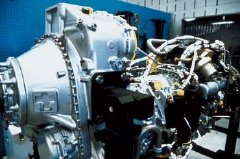Challenged to produce propulsion systems with higher efficiency and lower emissions, aerospace turbine engine manufacturers are pursuing solutions that range from the traditional to the radical.

Mature technologies are being implemented on legacy systems, evolving materials and process technologies are being pursued for application within fielded and next-generation systems, and revolutionary materials and process technologies are being developed for radical changes in future turbine engine systems.
Authors Kenneth A. Green and David U. Furrer of Rolls-Royce Corporation, Indianapolis, describe the trends in developing “Advanced Turbine Engine Materials” in an article available free of charge from ASM International’s Advanced Materials & Processes website at www.asminternational.org/amp.
Additional coverage of advances in novel and engineered materials systems and processes for aerospace applications will be presented at the AeroMat 2009 Conference & Exposition, to be held June 7-11 in Dayton, Ohio. For more information about AeroMat, visit www.asminternational.org/aeromat
Green and Furrer estimate that transportation as a sector contributes approximately 20 percent of global emissions. Therefore, turbine engine manufacturers are stepping up research on more efficient fuel combustion. A significant reduction of emissions may be possible by improved specific fuel consumption, which reduces the fuel requirements of the engine and will also ease the burden of extracting increasingly scarce natural resources. The European Union is working to implement an emissions trading scheme, which will include aviation, by 2012. To contend with this and foreseeable regulations, reductions in fuel consumption and emissions are required.
Linking design, materials, and manufacturing technologies by means of computer modeling and simulation is now a requirement for high-performance, high-efficiency components and systems. Designs depend on materials whose properties depend on the manufacturing route. Models allow for location-specific mechanical property prediction, which supports design for manufacturing and optimization of materials and manufacturing.
Modeling and simulation are also being applied to optimize established materials and processes. Revolutionary materials and process technologies have the potential to significantly improve efficiency and “green” capability of turbine engines. By definition they start at a low maturity level and require development, assessment, and validation before being applied to any future system. However, these high-risk/high-payoff technologies, if successful in achieving aggressive performance targets, may enable new component and/or system designs that enable major improvements in overall capability and performance.
An example of this might be ultra-high temperature ceramic materials, which if capable of being designed and manufactured into real components, could radically change current system designs. Even if the ultimate goal is not achieved, the benefits from the technology development effort must be captured and utilized to the greatest extent possible.
Efforts are also aggressively being pursued to assess the impact of emerging materials and processes on fuel consumption. Within these efforts, a systems based approach is being applied, with final engine performance the result of closely linked materials, manufacturing process, and design. The impact of these can be simulated in a “rubber” engine, a model in which materials and designs can be “stretched” and optimized.
The big drivers in an overall propulsion system will be those materials and manufacturing technologies that can support higher engine operating temperature, support reduced weight, provide increased strength, and/or enable tighter sealing and dimensional control. Higher engine operating temperature can be directly related to increased fuel efficiency. Weight reductions through lower-density or higher strength materials also provide for efficiency improvements. Stronger material can reduce the mass of individual components and, more significantly, can provide for reduced mass of associated components. Improved sealing capabilities can also be directly related to gains in performance and efficiency.
To achieve these goals, candidate materials for further development and implementation into future turbine engine systems include higher temperature compressor/turbine disks and airfoils, shafting with higher strength and higher modulus, ceramic matrix composites, and high-temperature organic matrix composites. Manufacturing methods must enable closer control of dimensional tolerances, geometry, and many other parameters.
With reduced fuel burn as the key metric, the high payoff materials and processes can be readily identified. Once the assessment has identified a series of technologies that can provide a significant improvement in efficiency, efforts are initiated to bring them up to the required maturity level for insertion into propulsion systems.